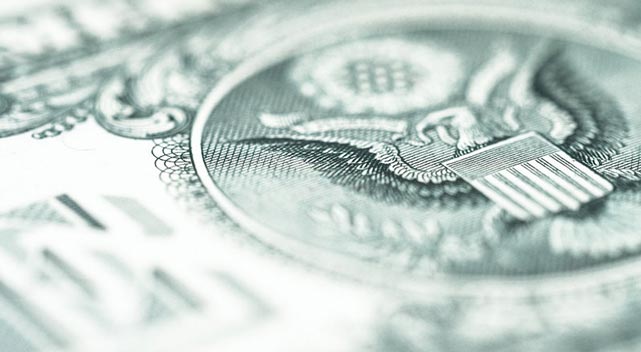Pound to US Dollar Forecast: GBP Stalls as USD Resilience Persists
- Written by
Frank Davies

The Pound to Dollar exchange rate (GBP/USD) slipped below 1.3400 on Tuesday as firm dollar demand and renewed UK fiscal concerns undermined sterling, leaving the pair trapped in a narrowing range.
The Pound Sterling was unable to make any attack on the 1.3500 level in early Europe on Tuesday and dipped sharply to test support just below 1.3400 before stabilising and trading around 1.3425.
A dip below 1.3400 would risk a test of key support around 1.3330.
The Pound was undermined by a generally firm dollar tone, although there was also independent weakness at the New York open.
There was a slide in UK bonds at the US open with the 10-year bond yield increasing to around 4.77%, before some relief later in the session with the yield back down to 4.73%.
Equites held firm while gold was again a major talking point as it hit a fresh record high.
Markets remain nervous over the UK fiscal trends and risk of renewed selling in bonds and the Pound.
SocGen commented; “While most currencies have seen implied vols and risk reversals ease in recent months, Sterling remains an outlier.”
UoB expects support will hold; “We continue to expect range-trading, but a narrower range of 1.3400/1.3525 is likely sufficient to contain the price movements for now.”
US politics remains a key focus.
Scotiabank commented; “The US government shutdown continues and signs of meaningful progress have been limited, despite President Trump’s offer to negotiate— once the government has been reopened.”
The shutdown will continue to delay key economic data releases which has robbed markets of near-term drivers.
ING commented; “the dollar is an expensive short position given its 4.15% per annum one-week interest rate. If no significant US data is forthcoming, there is even less reason to sit with – let alone add to – short dollar positions.”
The latest data suggested that central banks were not significant dollar sellers during the second quarter of 2026 and not a culprit in the dollar's decline.
ING commented; “what makes more sense is that it was the private sector selling dollars in the second quarter as they increased their hedge ratios on US investments.”
The bank expects that this will be a key element for the US currency moving forwards; “We expect these hedge ratios to be increased and the dollar to weaken further as the Fed cuts rates a further 100bp over the next nine months.”
Domestically, Halifax reported that UK house prices declined 0.3% for September with the year-on-year increase slowing to 1.3% from 2.0% and the weakest rate of increase since April 2024.
Halifax head of mortgages Amanda Bryden commented; “Although the broader economic outlook remains uncertain, we continue to expect modest growth through the remainder of the year.”
STORY LINK Pound to US Dollar Forecast: GBP Stalls as USD Resilience Persists

The Pound to Dollar exchange rate (GBP/USD) slipped below 1.3400 on Tuesday as firm dollar demand and renewed UK fiscal concerns undermined sterling, leaving the pair trapped in a narrowing range.
GBP/USD Forecasts: Tests 1.34 Amid Dollar Gains
The Pound Sterling was unable to make any attack on the 1.3500 level in early Europe on Tuesday and dipped sharply to test support just below 1.3400 before stabilising and trading around 1.3425.
A dip below 1.3400 would risk a test of key support around 1.3330.
The Pound was undermined by a generally firm dollar tone, although there was also independent weakness at the New York open.
There was a slide in UK bonds at the US open with the 10-year bond yield increasing to around 4.77%, before some relief later in the session with the yield back down to 4.73%.
Equites held firm while gold was again a major talking point as it hit a fresh record high.
Save on Your GBP/USD Transfer
Get better rates and lower fees on your next international money transfer. Compare TorFX with top UK banks in seconds and see how much you could save.
SocGen commented; “While most currencies have seen implied vols and risk reversals ease in recent months, Sterling remains an outlier.”
UoB expects support will hold; “We continue to expect range-trading, but a narrower range of 1.3400/1.3525 is likely sufficient to contain the price movements for now.”
US politics remains a key focus.
Scotiabank commented; “The US government shutdown continues and signs of meaningful progress have been limited, despite President Trump’s offer to negotiate— once the government has been reopened.”
The shutdown will continue to delay key economic data releases which has robbed markets of near-term drivers.
ING commented; “the dollar is an expensive short position given its 4.15% per annum one-week interest rate. If no significant US data is forthcoming, there is even less reason to sit with – let alone add to – short dollar positions.”
The latest data suggested that central banks were not significant dollar sellers during the second quarter of 2026 and not a culprit in the dollar's decline.
ING commented; “what makes more sense is that it was the private sector selling dollars in the second quarter as they increased their hedge ratios on US investments.”
The bank expects that this will be a key element for the US currency moving forwards; “We expect these hedge ratios to be increased and the dollar to weaken further as the Fed cuts rates a further 100bp over the next nine months.”
Domestically, Halifax reported that UK house prices declined 0.3% for September with the year-on-year increase slowing to 1.3% from 2.0% and the weakest rate of increase since April 2024.
Halifax head of mortgages Amanda Bryden commented; “Although the broader economic outlook remains uncertain, we continue to expect modest growth through the remainder of the year.”
International Money Transfer? Ask our resident FX expert a money transfer question or try John's new, free, no-obligation personal service! ,where he helps every step of the way, ensuring you get the best exchange rates on your currency requirements.
TAGS: Pound Dollar Forecasts
Comments are currrently disabled
Related Stories:
- Pound-to-Dollar Forecast: Mixed US Labour Data Keeps USD Soft, GBP Stabilises - November 21, 2025
- GBP to USD Forecast: Pound Sterling Upside to be Limited Ahead of UK Budget - November 20, 2025
- British Pound to Dollar Forecast: GBP Holds 1.30 as Tech Jitters, CPI Shape Outlook - November 20, 2025
- GBP/USD Forecast: Pound Sterling Risks $1.30 as Markets Turn Cautious - November 19, 2025
- British Pound to Dollar Forecast: GBP Coils Below 1.32 - November 19, 2025
- GBP to USD Forecast: Pound Sterling Weakens on Equity Selloff, Safe-Haven Demand - November 18, 2025
- British Pound to Dollar Forecast: GBP Pauses <1.32 as Budget, Fed Risks Loom - November 18, 2025
- GBP/USD Forecast: Pound Sterling Struggles as BoE Cut Bets Build - November 17, 2025
- Pound to Dollar Forecast: GBP/USD Pressured as Budget Angst Hits Sterling - November 17, 2025
Latest News:
- Pound to Euro: Consensus Bank Forecasts Point to GBP/EUR Near 1.13 - November 22, 2025
- Pound-to-Dollar Forecast: Mixed US Labour Data Keeps USD Soft, GBP Stabilises - November 21, 2025
- Pound-to-Euro Forecast: Budget Nerves Limit GBP Support - November 21, 2025
- GBP to USD Forecast: Pound Sterling Upside to be Limited Ahead of UK Budget - November 20, 2025
- Pound to Euro Gains as EUR Pressured by Trade Dispute - November 20, 2025
- British Pound to Dollar Forecast: GBP Holds 1.30 as Tech Jitters, CPI Shape Outlook - November 20, 2025
- Pound to Euro Forecast: GBP to Stay Fragile Ahead of Budget - November 20, 2025
- GBP/USD Forecast: Pound Sterling Risks $1.30 as Markets Turn Cautious - November 19, 2025
- Pound-to-Euro Slips as UK Inflation Cools - November 19, 2025
- Pound to Euro FX Forecast: GBP/EUR Stabilises, But Downside Risks to Continue - November 19, 2025









